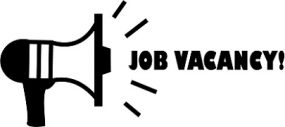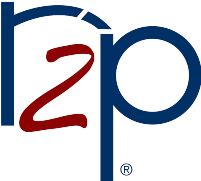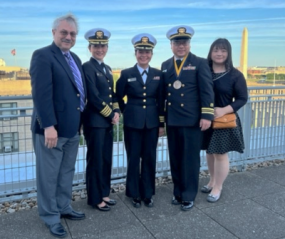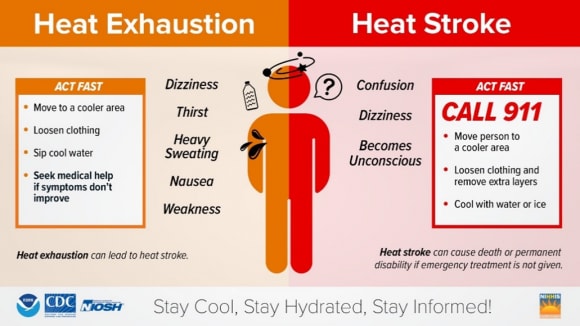eNews: Volume 20, Number 3 (July 2022)
Volume 20, Number 3 (July 2022)
From the Director’s Desk
John Howard, M.D. Director, NIOSH
Preparing for Extreme Heat This Summer
As we head into the hottest part of summer, make sure your workers are prepared for extreme heat. Hot environments combined with physical activity and other factors, like clothing and personal protective equipment (PPE), can increase the body’s temperature and cause heat stress. Heat stress can result in heat-related illnesses like heat stroke, heat exhaustion, heat cramps, or heat rashes.
Workers at risk of heat stress include outdoor workers and workers in hot environments, such as construction workers, landscaping workers, agricultural workers, miners, firefighters, food service workers, and others. Heat can also increase the risk of other types of workplace injuries caused by sweaty palms, fogged-up safety glasses, and dizziness.
Here are some recommended strategies to prevent heat-related illnesses at your workplace:
Monitor: Employers should monitor the weather and plan for when a heat wave is forecasted. While employers and supervisors should monitor workers in hot conditions, they can also put a buddy system in place where workers observe each other for symptoms of heat-related illness.
Rest Breaks: In the heat, workers need more time to rest and cool down. Employers should provide a cooler place, a shaded or air-conditioned area is best, and encourage workers to take breaks. Adjust how often and how long rest breaks are based on conditions (e.g., temperature, humidity, sunlight, physical tasks) and PPE worn because wearing PPE can increase the risk of heat-related illnesses.
Hydration: One of the most important ways to prevent heat-related illness is drinking enough fluids. Workers need to drink small amounts of water throughout the day so that they never become thirsty. For moderately intense work that lasts less than 2 hours, workers should drink approximately 1 cup of water every 15 to 20 minutes. During prolonged sweating lasting several hours, workers should drink sports drinks containing balanced electrolytes. Employers should make cool, potable water readily available and encourage workers to hydrate before, during, and after work.
Acclimatization: Over time, our bodies can go through a gradual process known as acclimatization, which helps us adapt to heat exposure. New workers on an 8-hour shift should spend only about an hour and a half in the heat on their first day. Their exposure time should increase slowly—no more than a 20% increase per day. Experienced workers should have no more than 50% exposure the first day. By the fourth day, most healthy workers should be able to tolerate 8 hours in the heat assuming they are well-hydrated and have appropriate rest breaks.
Training: NIOSH recommends implementing a heat stress training program, in a language workers and supervisors understand, which includes the following:
- Identifying and controlling heat hazards and understanding environmental risk factors
- Understanding individual factors that may impact workers’ risk for developing heat-related illness
- Recognizing the signs and symptoms of heat-related injuries and illnesses
- Administering first aid and CPR for heat-related illness
- Activating emergency medical services quickly when needed
NIOSH has several useful resources including the OSHA-NIOSH Heat Safety Tool App, which can be used to plan outdoor work activities based on how hot it feels throughout the day. NIOSH webpages related to heat stress, heat-related illness, and hazards to outdoor workers provide detailed information, along with a link to the NIOSH Criteria for a Recommended Standard: Occupational Exposure to Heat and Hot Environments.
Heat-related illnesses can be prevented for a healthier summer. Follow NIOSH on Facebook, Twitter, Instagram, and LinkedIn for safety tips and information all summer long.
Elevated Blood Pressure and Heart Rate More Common After Physical Activity at Work Than Leisure
If you ever have felt energetic after an active weekend but exhausted after an active workday, your experience may be backed by science, according to research recently published in the journal Occupational & Environmental Medicine.
Previous studies suggested that physical activity at work is associated with decreased heart health, while physical activity for leisure may have an opposite, protective effect. To look at the biological mechanisms underlying this difference, researchers at NIOSH and The University of Pittsburgh compared heart rate and blood pressure between physically active non-workdays and workdays.
Study participants included 19 middle-aged men whose jobs in food service, material moving, healthcare, or maintenance involved light physical activity. Their average age was 47 years, and 68% were white. All participants wore activity and heart rate monitors for 7 days and a blood pressure monitor on one non-workday and one workday. The researchers then averaged heart rate and blood pressure readings between non-workdays and workdays with comparable activity levels.
The results showed that heart rate over 24 hours and upon waking was higher on workdays compared with non-workdays. On workdays, the average 24-hour heart rate was 84 beats per minute, compared with 79 on non-workdays, while the waking workday heart rate was 89, compared with 83 on non-workdays. Similarly, higher diastolic blood pressure—the bottom number on a reading that measures blood pressure between heart beats—occurred on workdays: 75, compared with 73 on non-workdays. No differences occurred in systolic blood pressure, which is when the heart contracts, or in night-time blood pressure or heart rate.
In other, preliminary findings, increases in blood pressure and heart rate remained elevated for longer periods after being physically active at work versus leisure. Overall, the study suggests that public-health recommendations for physical activity may need to be different for physical activity at work than at leisure.
More information is available: NIOSH | Cardiovascular Disease and Occupational Factors
New Research Framework Accounts for Social Influences on Work and Health
Most of what we know about work and health is based on research through a framework of exposure and disease, but this approach does not address social influences on work and health. To better understand this relationship, the complexity of work must be viewed in the context of society.
A new framework was recently proposed to guide research on work, health, and health inequity. The framework, published in SSM – Population Health by a NIOSH researcher and collaborators, offers ways to investigate social factors that determine the level of exposure to hazards at work.
With an emphasis on work, the researchers identified three types of social institutions that create differences in health-related conditions: work and employment, general social policies, and resources for working people. The researchers also identified underlying sociopolitical forces—historical, cultural, and economic beliefs and ideals—that configure these social institutions in certain ways and systematically place groups at higher risk. These forces include racism, sexism, and other stereotypes that sort groups into different kinds of jobs. The resulting divisions may influence the success of occupational safety and health regulations as well as the access to needed resources.
To demonstrate how social institutions affect work-related health, researchers compared characteristics of work and health between the United States and the European Union’s 28 member states (EU28). One notable difference was the proportion of workers reporting poor general health: <3% in the EU28 and >9% in the United States. In the population overall, the proportion reporting poor general health is about 9% in both regions, which suggests that U.S. workers with health problems continue working while their EU28 counterparts leave the workforce. Various social institutions support people differently during the time of injury, sickness, and recovery (e.g., healthcare access, income replacement, paid leave). As a result, differences in social institutions between the United States and EU28 may explain poorer health in the U.S. workforce, according to the researchers.
More information is available: NIOSH Total Worker Health® Program
Director’s Desk
Research Rounds
- Elevated Blood Pressure & Heart Rate More Common After Physical Activity at Work Than Leisure
- New Research Framework Accounts for Social Influences on Work & Health
Highlights
- NIOSH Seeks Deputy Director for Program
- Upcoming Webinars
- News From Total Worker Health®
- NIOSH Extramural Research and Training Program Annual Report Released
- Development of the NIOSH Worker Well-Being Questionnaire (WellBQ)
- NIOSH & the Society for Chemical Hazard Communication Sign New Partnership Agreement
- NIOSH Enters Ambassador Status With OSHA and the National STEPS Network
- Online Workplace Violence Prevention Course for Nurses
- NIOSH Congratulates
Monthly Features
John Howard, M.D., Director
Christina Spring, Editor in Chief
Managing Editor
Tanya Headley
Section Editor
Anne Blank, Research Rounds
Kiana Harper, Highlights & Monthly Features
Contributing Editors
Sarah Mitchell
Donjanea Williams
Copy Editor
Cheryl Hamilton
Technical Support
Steve Leonard, Technical Lead
Margaret Bertsch, Web Developer
To receive the NIOSH eNews email newsletter, enter your email address:
NIOSH Seeks Deputy Director for Program

NIOSH recently announced a vacancy for its Deputy Director of Program position. The Deputy Director will participate and fully share leadership for managing the Institute with the Institute Director. They will lead the Institute in establishing programmatic goals and be responsible for planning, developing, evaluating, and managing occupational safety and health public health research programs. The closing date for this position is July 28.
Upcoming Webinars:
Transformation of H&S Sensors Data into Information and Action: Real World Examples
The NIOSH Center for Direct Reading and Sensor Technologies (NCDRST) will host a webinar on July 27 from 8 a.m. to 10 a.m. (EDT). The NCDRST promotes a mindful adoption of sensors, advanced monitoring technologies, and improved methodologies for occupational health and safety and workers’ wellbeing. Read more and register.
Relevance, Practice and Insights From Applying Scenarios
The next Foresight Friday @ NIOSH webinar is July 29 from 11 a.m. to 12 p.m. (EDT). Dr. Cho Khong from the Saïd Business School at the University of Oxford will discuss how scenario-based planning can help organizations think strategically about the future and effectively respond to change. Read more and register.
News From Total Worker Health®
-
- Registration Reminder: 3rd International Symposium to Advance Total Worker Health®
Registration for the symposium, taking place October 11–14, is now open for in-person presenters. Open registration begins July 11. Learn more about registration options. - New Total Worker Health® in Action! eNewsletter
The June edition of the NIOSH Total Worker Health (TWH) quarterly newsletter is now available. This edition shares a sneak peek at the upcoming 3rd International Symposium to Advance TWH. You can also learn more about new training resources to combat the opioid and substance use crises.
- Registration Reminder: 3rd International Symposium to Advance Total Worker Health®
NIOSH Extramural Research and Training Program Annual Report Released
The most recent NIOSH Extramural Research and Training Program Annual Report is now available. The annual report describes how NIOSH invested in its multidisciplinary centers, investigator-initiated research projects, cooperative research agreements (including state surveillance programs), training project grants, small business innovation research, and the World Trade Center Health Program’s extramural portfolio of cooperative agreements. The report also highlights how the NIOSH Office of Extramural Programs and extramural researchers responded to the coronavirus disease 2019 (COVID-19) pandemic.
Development of the NIOSH Worker Well-Being Questionnaire (WellBQ)
A new article describes the development of the NIOSH WellBQ, an instrument that comprehensively measures worker well-being. It builds on a previous publication describing the development of the worker well-being framework through a literature review and expert panel recommendations. This new article describes the pilot testing of the draft instrument and the psychometric analysis performed to finalize the instrument and optimize validity. Learn more in the Journal of Occupational and Environmental Medicine.
Deadline for Nominations Extended for Annual Safe-In-Sound Excellence in Hearing Loss Prevention Award
NIOSH and partners are accepting nominations for the 2023 Safe-In-Sound Excellence in Hearing Loss Prevention Award through July 15. To submit a nomination please send a letter of intent describing why the nominated individual or organization deserves the award to nominations@safeinsound.us by the deadline The awards will be presented on February 10, 2023, at the annual Hearing Conservation Conference.

NIOSH and the Society for Chemical Hazard Communication Sign New Partnership Agreement
NIOSH and the Society for Chemical Hazard Communication recently signed an agreement to combine their expertise to advance protection of workers and promote best practices. They aim to encourage workers and employers to develop and use safety and health management programs and effective preventions strategies and technologies. A significant area of interest and potential collaboration is in the advancement of hazard communication related to chemicals in the workplace. For more information, please contact Thomas J. Lentz.
NIOSH Enters Ambassador Status With OSHA and the National STEPS Network
NIOSH recently entered into the new Ambassador status agreement with the Occupational Safety and Health Administration and the National Service, Transmission, Exploration, and Production Safety Network to prevent illnesses, injuries, and fatalities among exploration and production workers in the oil and gas industry. Read the full NIOSH Update.
Online Workplace Violence Prevention Course for Nurses
The past two years have been more challenging than usual for nurses and other members of healthcare teams. NIOSH continues to offer, in compliance with continuing education requirements, free, accredited online training for nurses and other related healthcare disciplines to prevent workplace violence. This award-winning course has been completed by more than 45,000 healthcare workers.

NIOSH Congratulates
LCDR Chaolong Qi, U.S.Public Health Service and NIOSH Engineer was recently awarded the 2021 Arthur S. Flemming Award. LCDR Qi received the award for his accomplishments that led to significant impacts in public service and protecting millions of workers and consumers from hazardous exposures. LCDR Qi’s accomplishments have had global impacts for public health research, an inventor of two award-winning U.S.-patented technologies for real-time measurement of aerosol particles. His research on silica exposure controls impacted changes in the national standard and emphasis program and has received national media coverage. Read more about LCDR Qi’s accomplishments in the full media release.
Pictured (l to r) on the campus of George Washington University: Frank Hearl (NIOSH Chief of Staff); CAPT Juliette Taylor & CDR Trang Tran (FDA); LCDR Qi and his wife, Ms. Taiying Chou. Photo by Frank Hearl
New Communication Products & Reports
FACE Reports
- Logging Processor Lost Traction and Rolled Down Hillside Fatally Injuring Operator—Idaho
- Sanitation Worker Struck by Backing Refuse Truck—North Carolina
Fire Fighter Fatality Investigation and Prevention Program Report
Health Hazard Evaluation Reports (HHEs)
Reports
Safety Features
NIOSH Science Blog
Please see the following new blogs from last month. Sign up to have notifications about new NIOSH Science Blogs delivered directly to your inbox!
- National Safety Month
- The Role of Robotics in the Future of Work
- The Manufacture and Selection of Eye Protection at Work
- Pausas para ir al baño
- Climatologic Conditions, Chronic Disease, and Work: Emerging Evidence and Implications
- Workplace Medical Mystery: What Is Making This Roofer Sick?
- Workplace Medical Mystery Solved: What Is Making This Roofer Sick?
Federal Register Notice
Draft National Institute for Occupational Safety and Health (NIOSH) Healthcare Personal Protective Technology (PPT) Targets for 2020 to 2030; Request for Comment
The notice was posted on May 16. Comments must be received by July 15.
National Institute for Occupational Safety and Health (NIOSH) Fire Fighter Fatality Investigation and Prevention Program (FFFIPP) Fire Service Community Meeting
The notice was posted on May 13. Comments must be received by July 27.
Proposed Data Collection Submitted for Public Comment and Recommendations: Artificial Stone Countertops: Exposures, Controls, Surveillance, & Translation
The notice was posted on June 2. Comments must be received by August 1.
NORA
New Report Reaffirms Relevance of National Occupational Research Agenda for Respiratory Health
A new report, Review of the 2019 National Occupational Research Agenda for Respiratory Health by Non-NIOSH Members of the Respiratory Health Cross-Sector Council, is now available. The non-NIOSH members completed a prioritization activity and found all 10 objectives of the Respiratory Heath Research Agenda to still be important and relevant. This illustrates that many issues in occupational respiratory health still need research and interventions.
News from Our Partners
Brief Updates From NIOSH-Supported Centers
Centers for Agricultural Safety and Health:
CPWR—The Center for Construction Research and Training:
-
- CPWR Update: June 2022 (newsletter)
Education and Research Centers and Training Project Grants:
-
- Remote Work Doesn’t Negatively Affect Productivity, Study Suggests (from Texas A&M University Training Project Grant)
- CARERC Gives UK Researchers Tools to Uncover Safety Concerns in the Workplace
- The University of Cincinnati Education and Research Center (ERC) recently released videos from its 22nd Annual Pilot Research Project Symposium, featuring presentations by recent pilot project awardees discussing their projects. This event also included a special keynote panel by ERC alumni who currently work at NIOSH and focused on discussions on topics like the future of occupational safety and health.
Conferences, Meetings, Webinars, & Events
This page provides a list of publicly available occupational safety and health-related conferences, meetings, webinars, and events sponsored by NIOSH as well as other government agencies, and nongovernment agencies, such as universities, professional societies, and organizations.

